Executive summary
- In Sierra Leone, the number of new confirmed cases is stable with 4 cases reported on the week ending 26 July 2015.
- Two cases were reported from the Western Area district, which contains the capital Freetown.
- However, one case was reported in the district of Tonkolili for the first time since May 2015.
- Control measures must remain sustained in order to end the epidemic.
Data
Weekly new cases
Notes
- Weekly number of new cases and deaths are computed by summing daily numbers. Note that this doesn’t account for reclassification of cases that occur over the week: as such, suspected cases that are confirmed will appear in both suspected and confirmed counts.
- A week is defined from Monday to Sunday.
- Weeks with missing daily SitReps appear slightly transparent.
- Where possible, numbers are stacked by case status (confirmed, probable, suspected).
- Western Area Rural and Urban are presented both separately and grouped (some SitReps only had aggregated numbers)
- Only three SitReps are available for the week 3 to 9 November. Hence the drop in the number of reported cases for that week.
Weekly new confirmed, probable & suspected cases
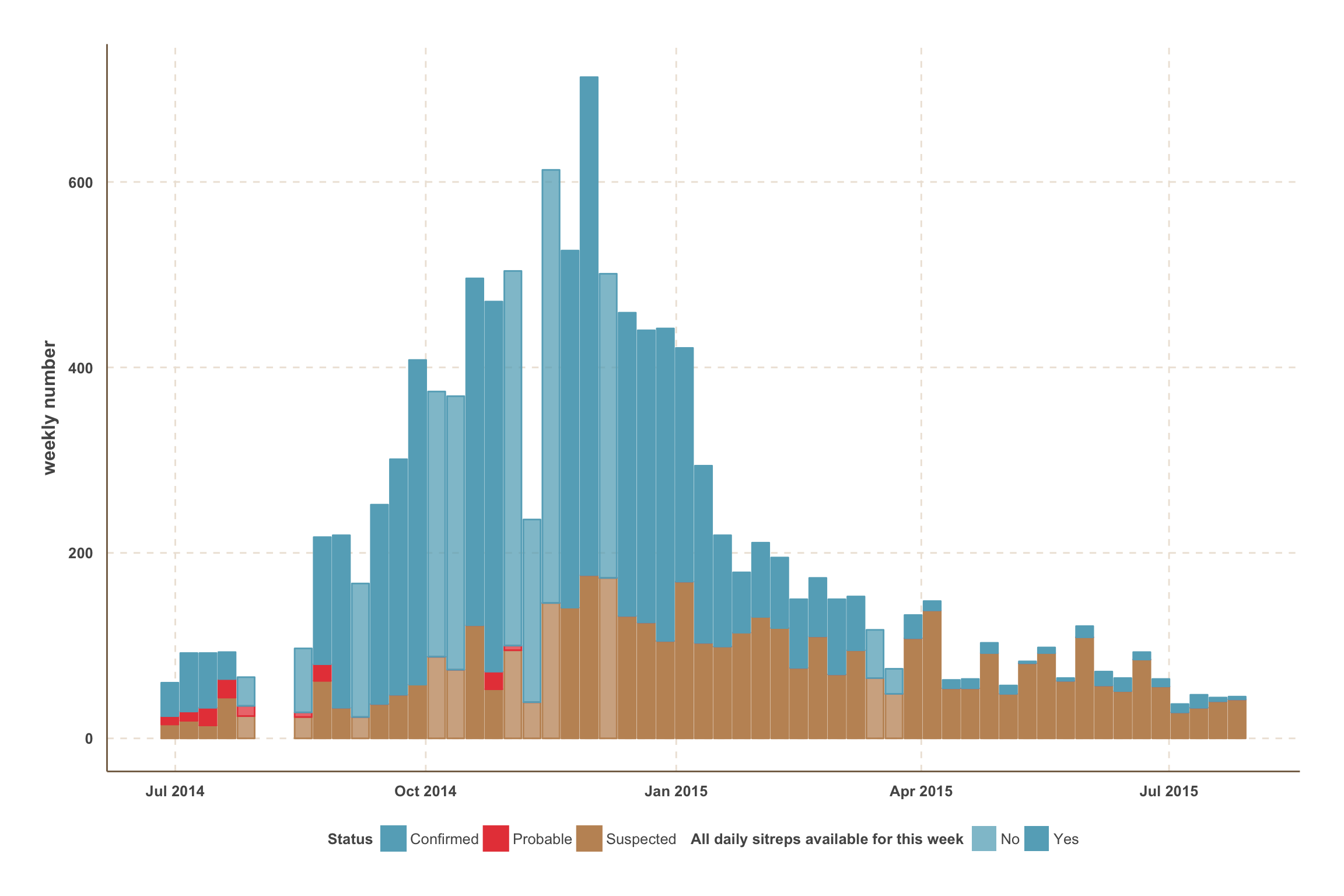
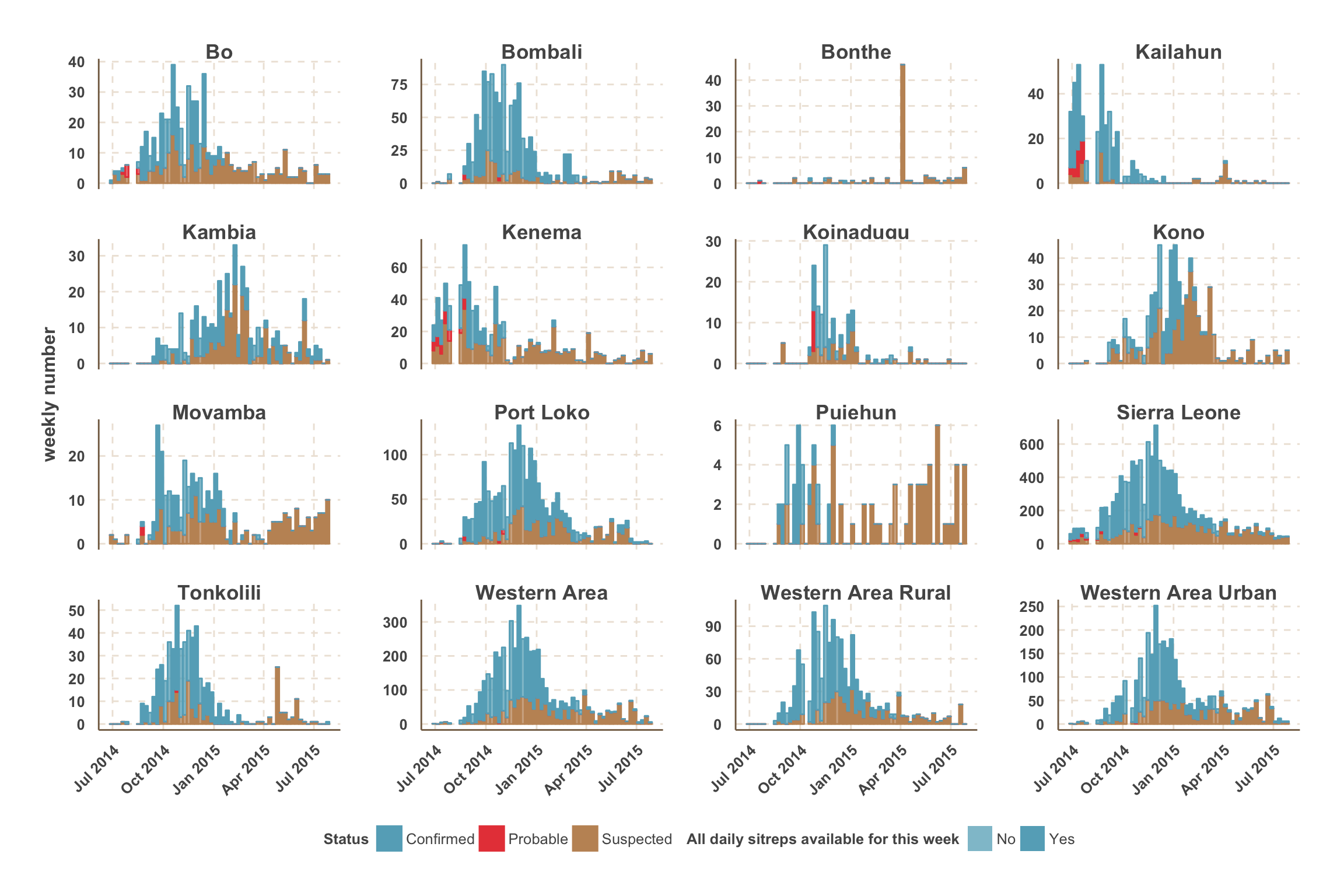
Weekly new non cases
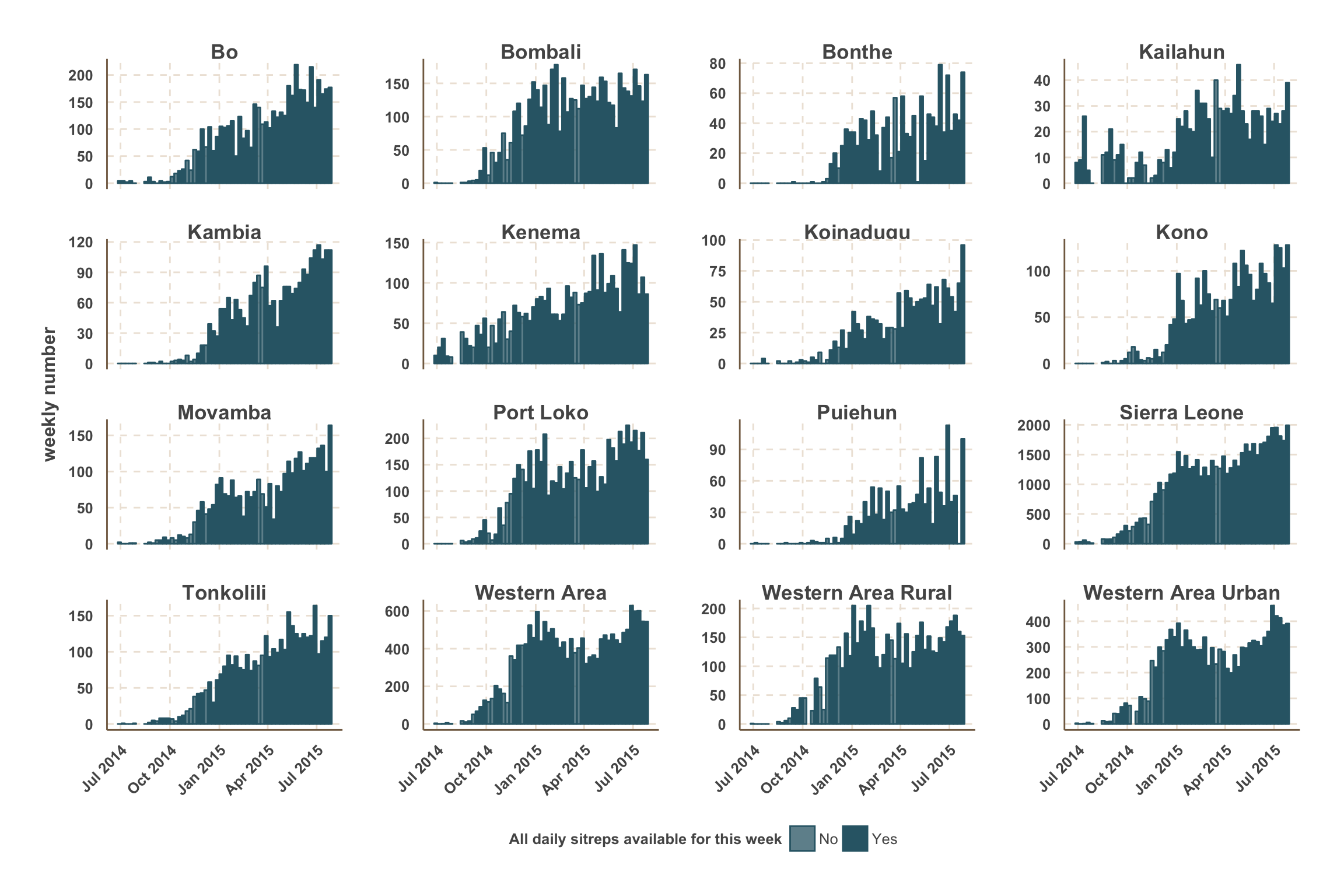
Weekly proportion of new confirmed & probable cases
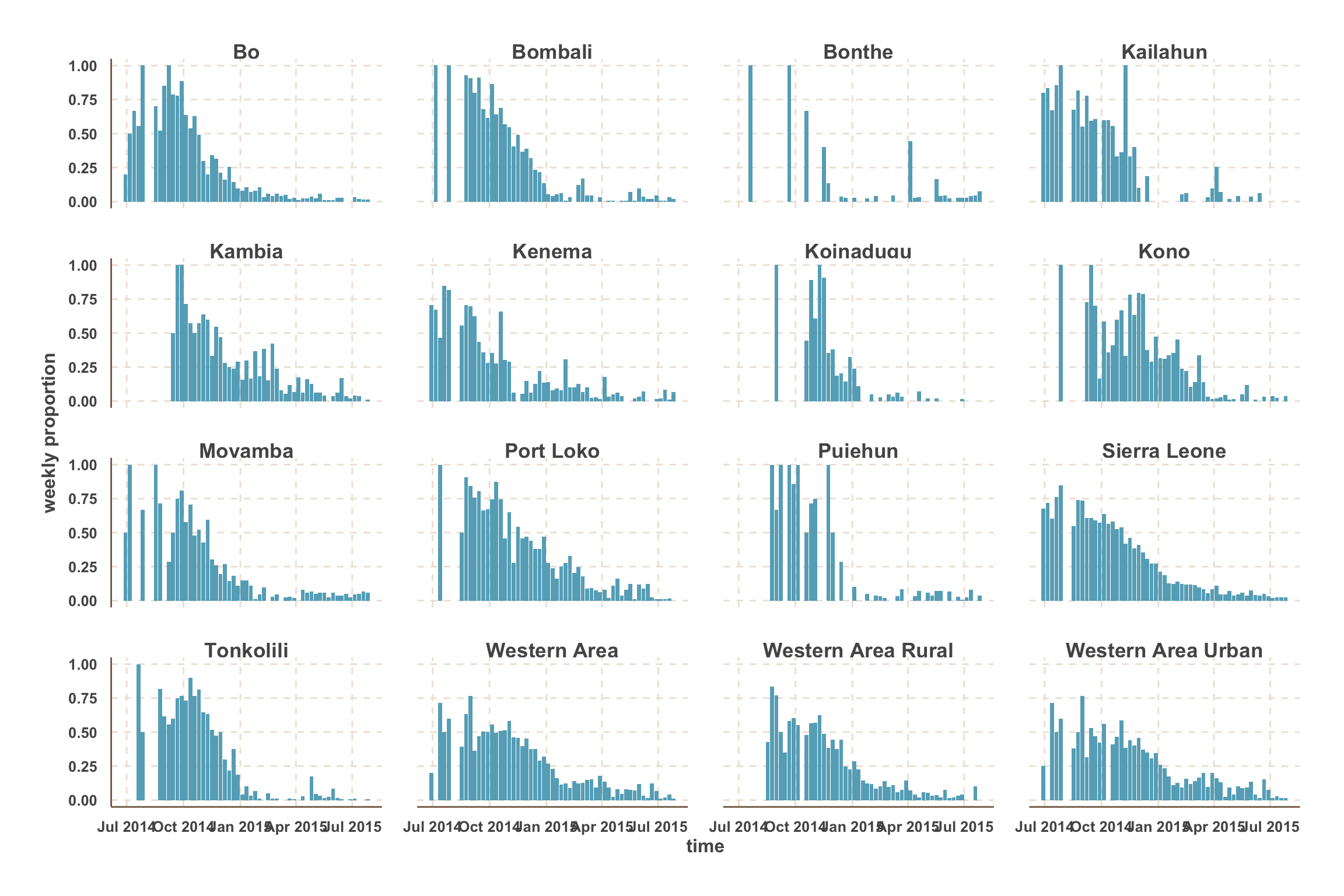
Cumulative cases and deaths
Notes
- Cumulative number of cases and deaths are plotted with a daily time-step using all available SitReps.
- Where possible, cumulative numbers are stacked by case status (confirmed, probable, suspected).
- Although the cumulative number of cases increase smoothly over time, the cumulative number of deaths display a sudden increase early October 2014.
- This is probably due to continuous data cleaning and reclassification of cases outcome status in the MoHS line list.
- Similar changes were reported in the WHO Sitrep of 29 October 2014.
Cumulative confirmed, probable & suspected cases

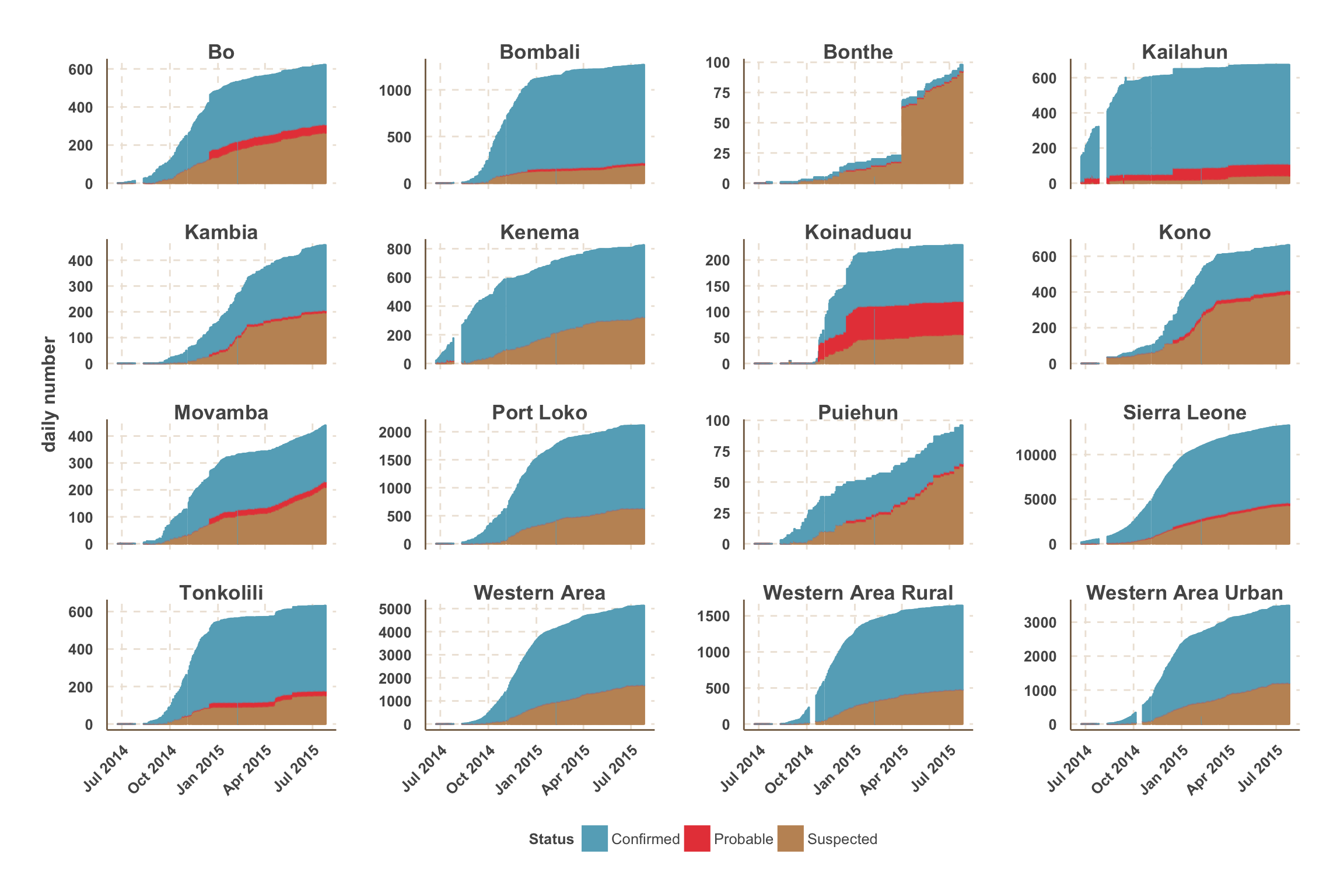
Cumulative non cases
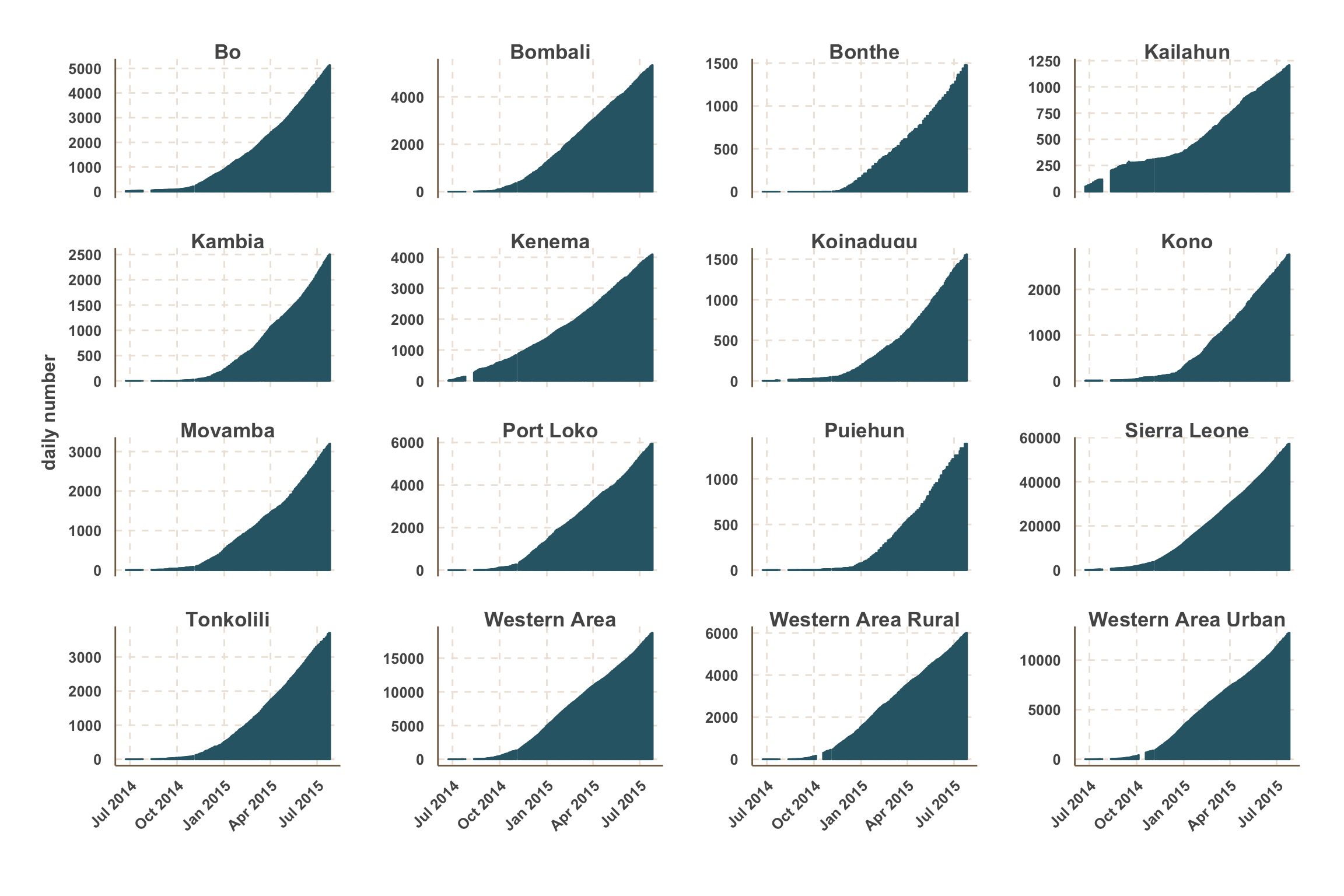
Cumulative confirmed, probable & suspected deaths
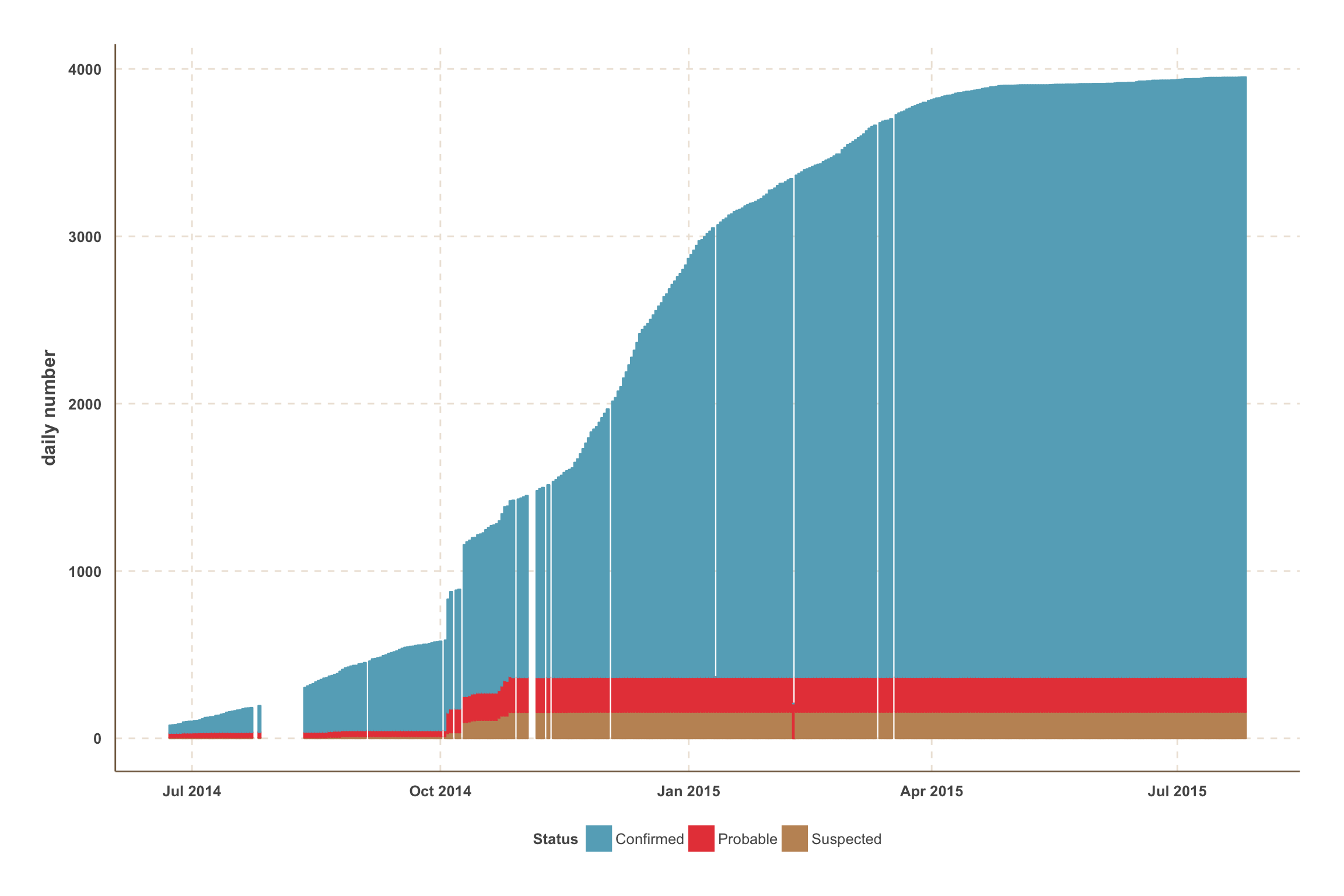
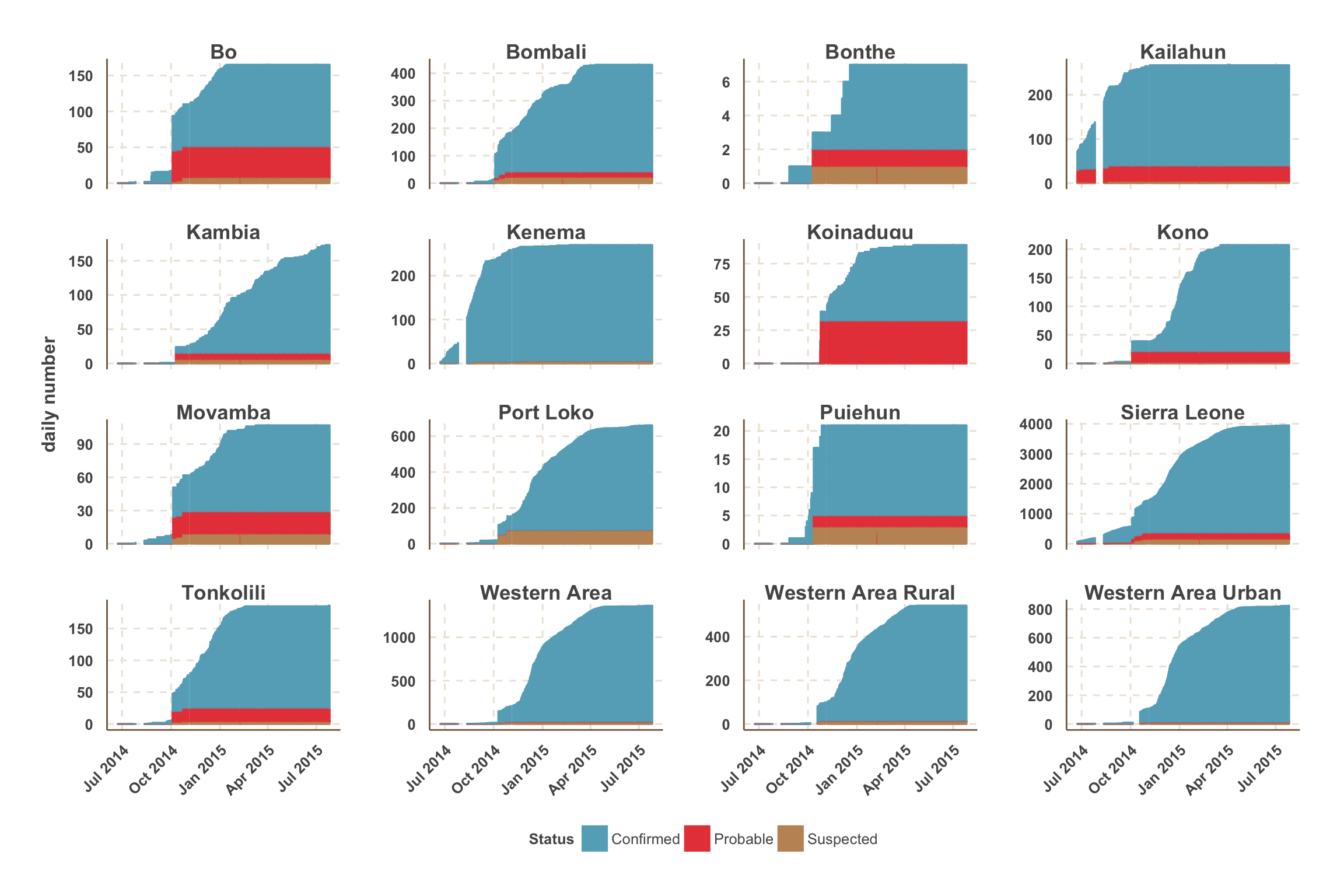
Holding and treatment centres
Currently admitted

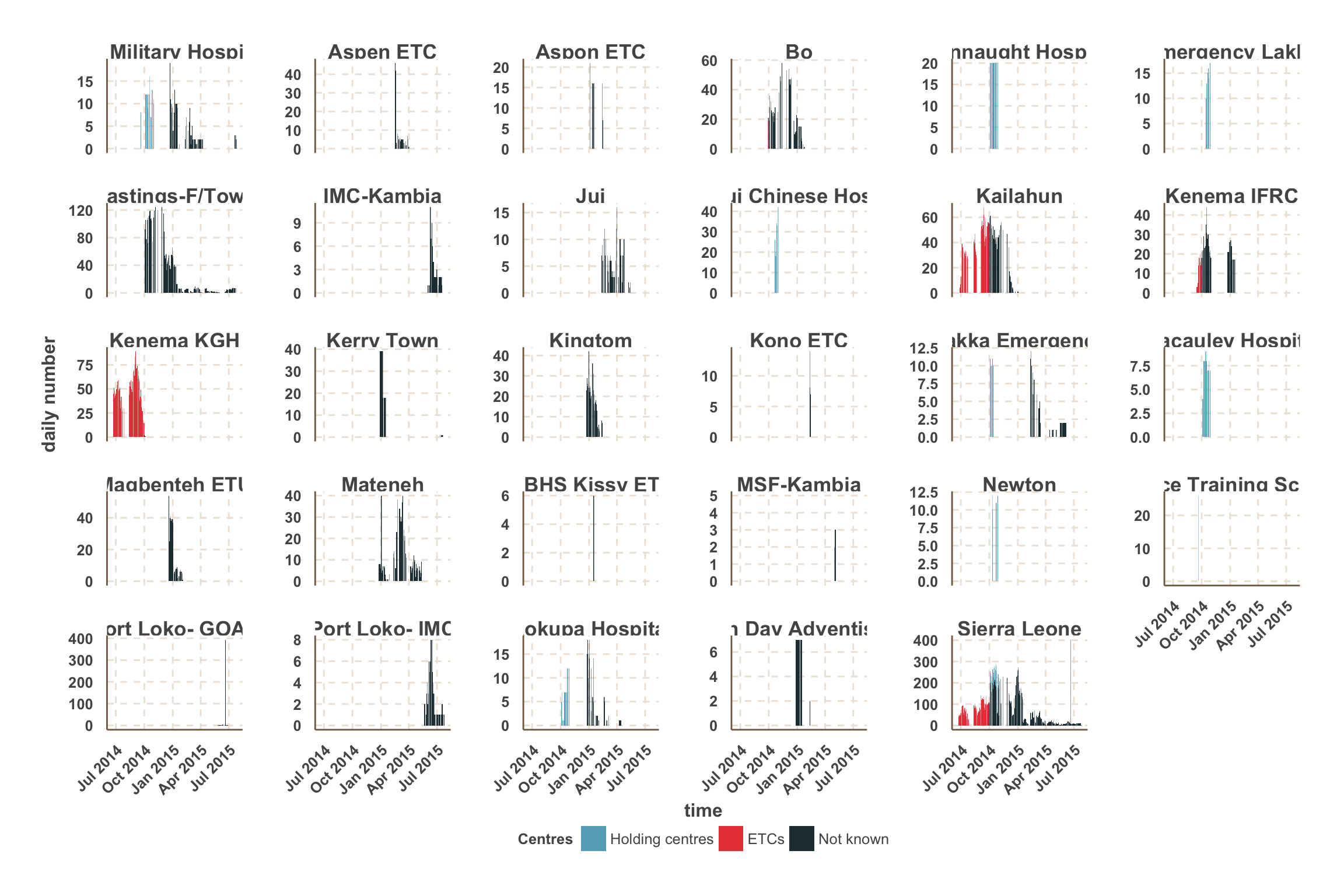
Weekly new admissions
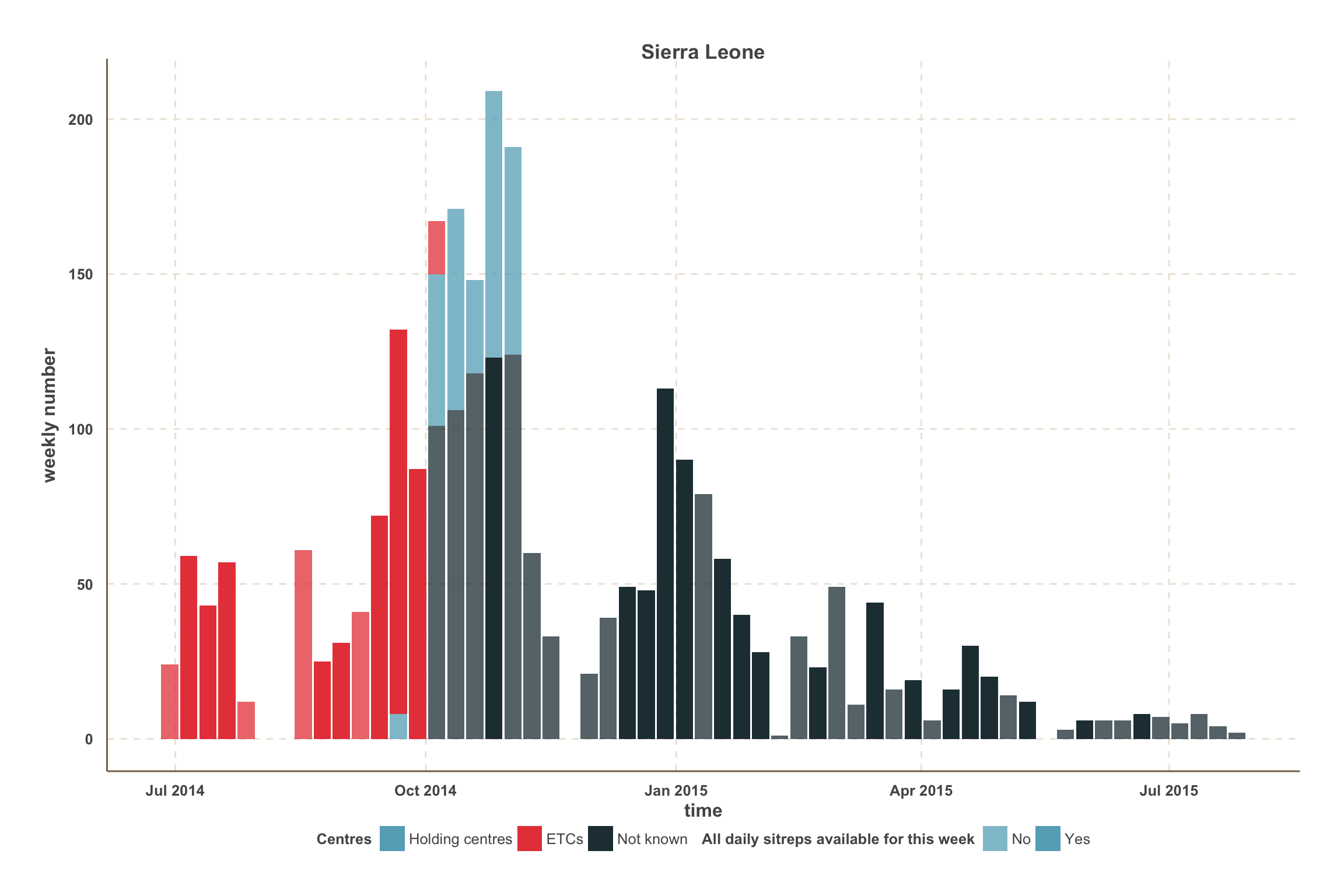
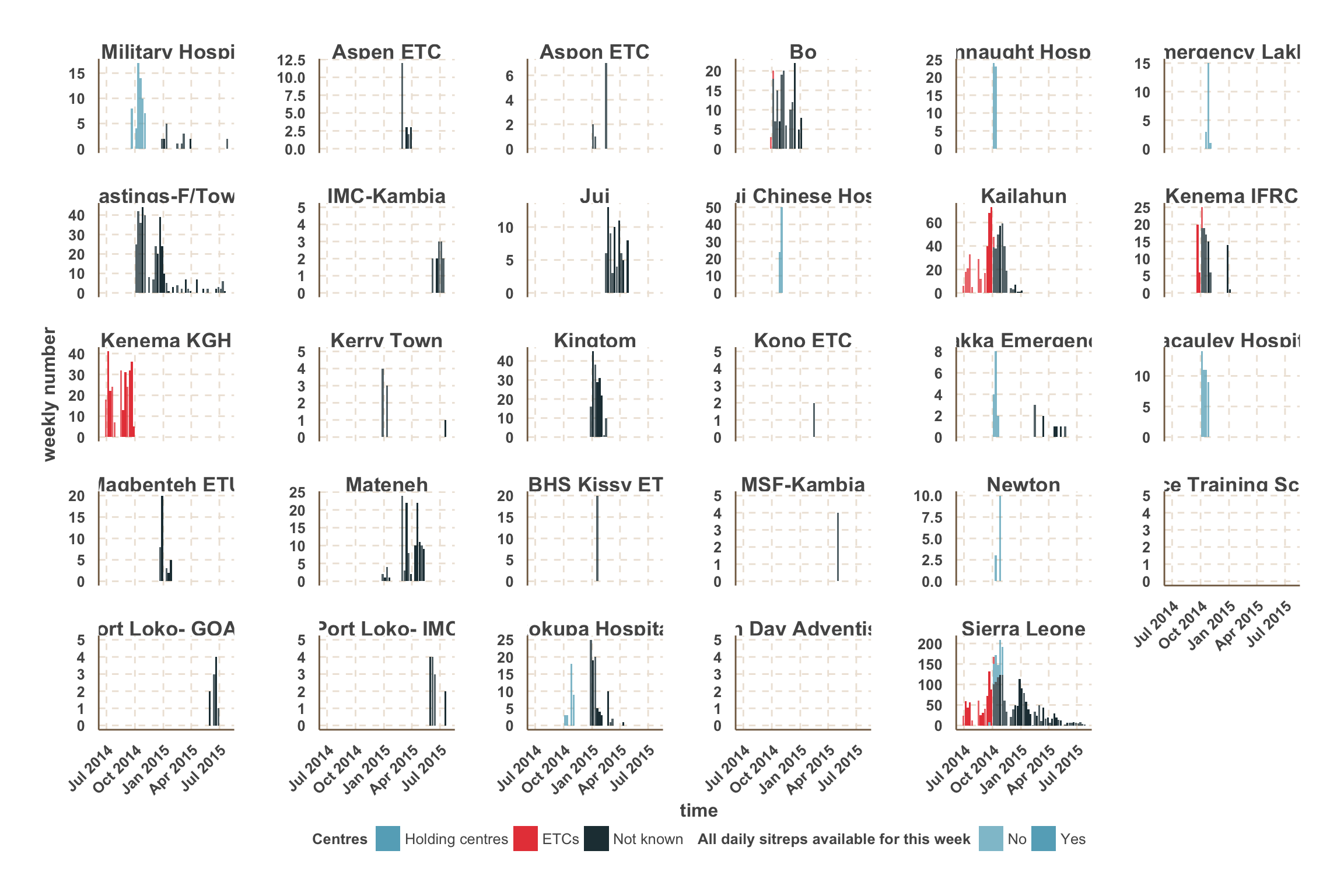
Daily numbers of isolated, new admissions & new cases
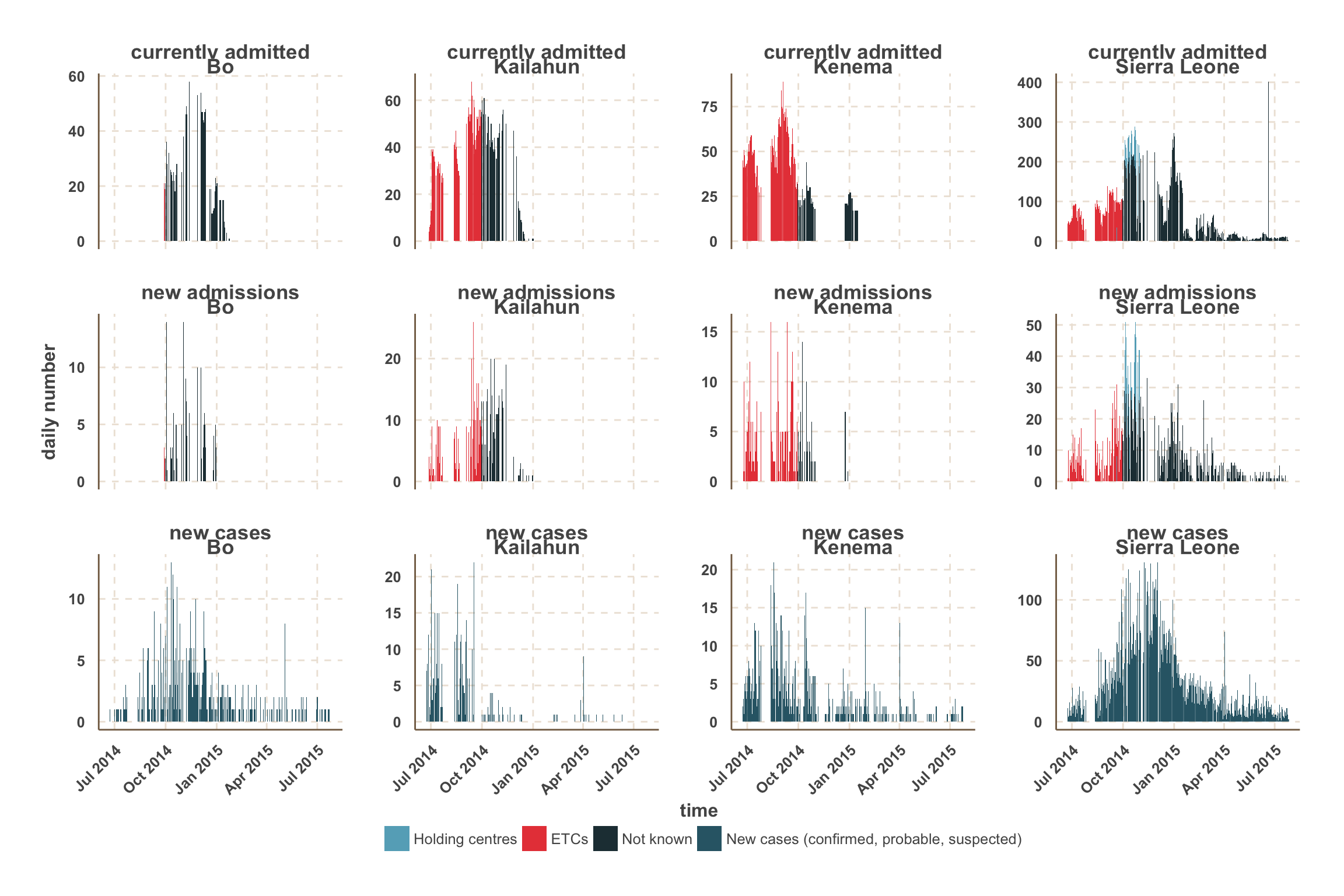
Weekly new deaths in ETCs

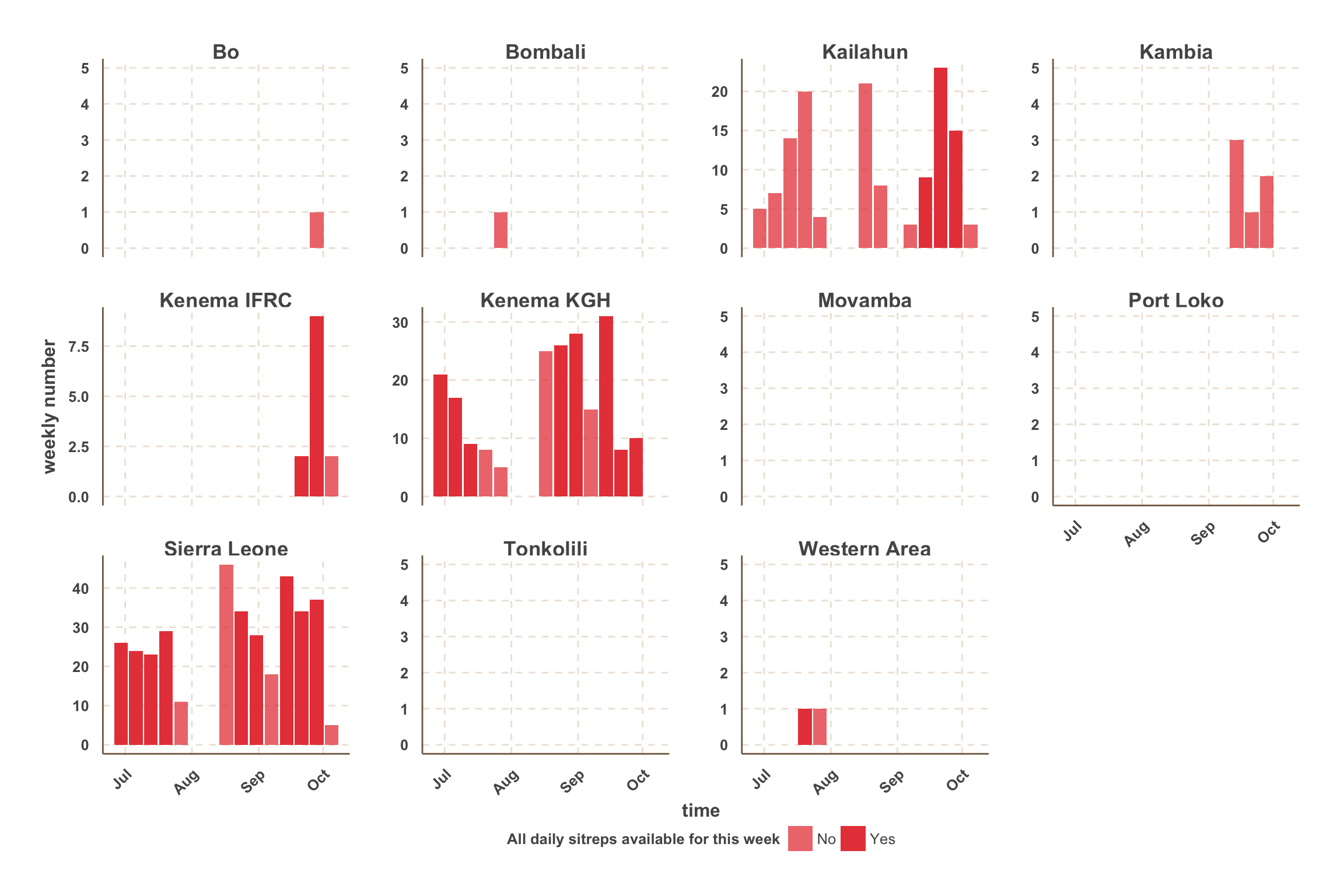
Weekly discharges from ETCs

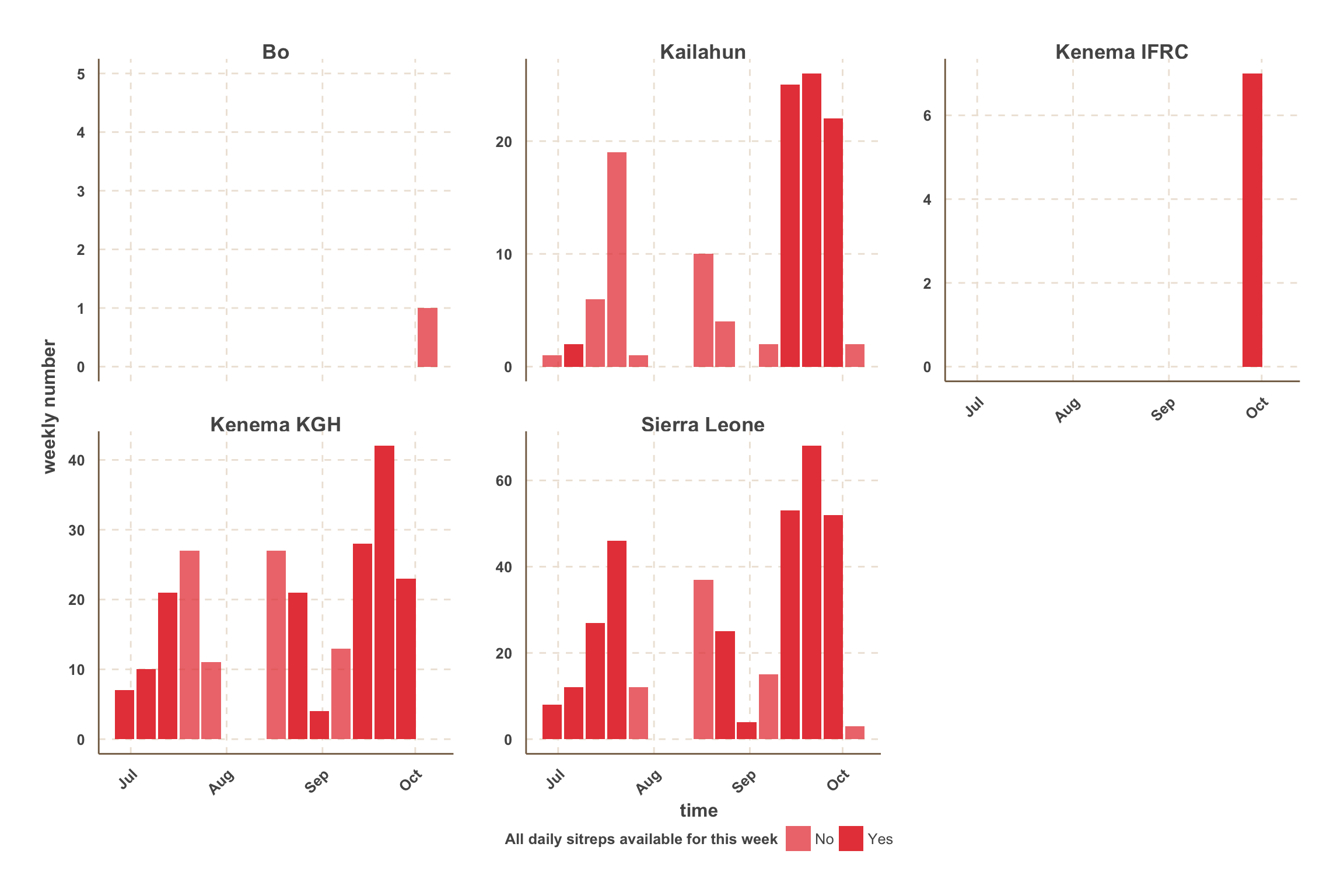
Weekly referrals to Holding Centres
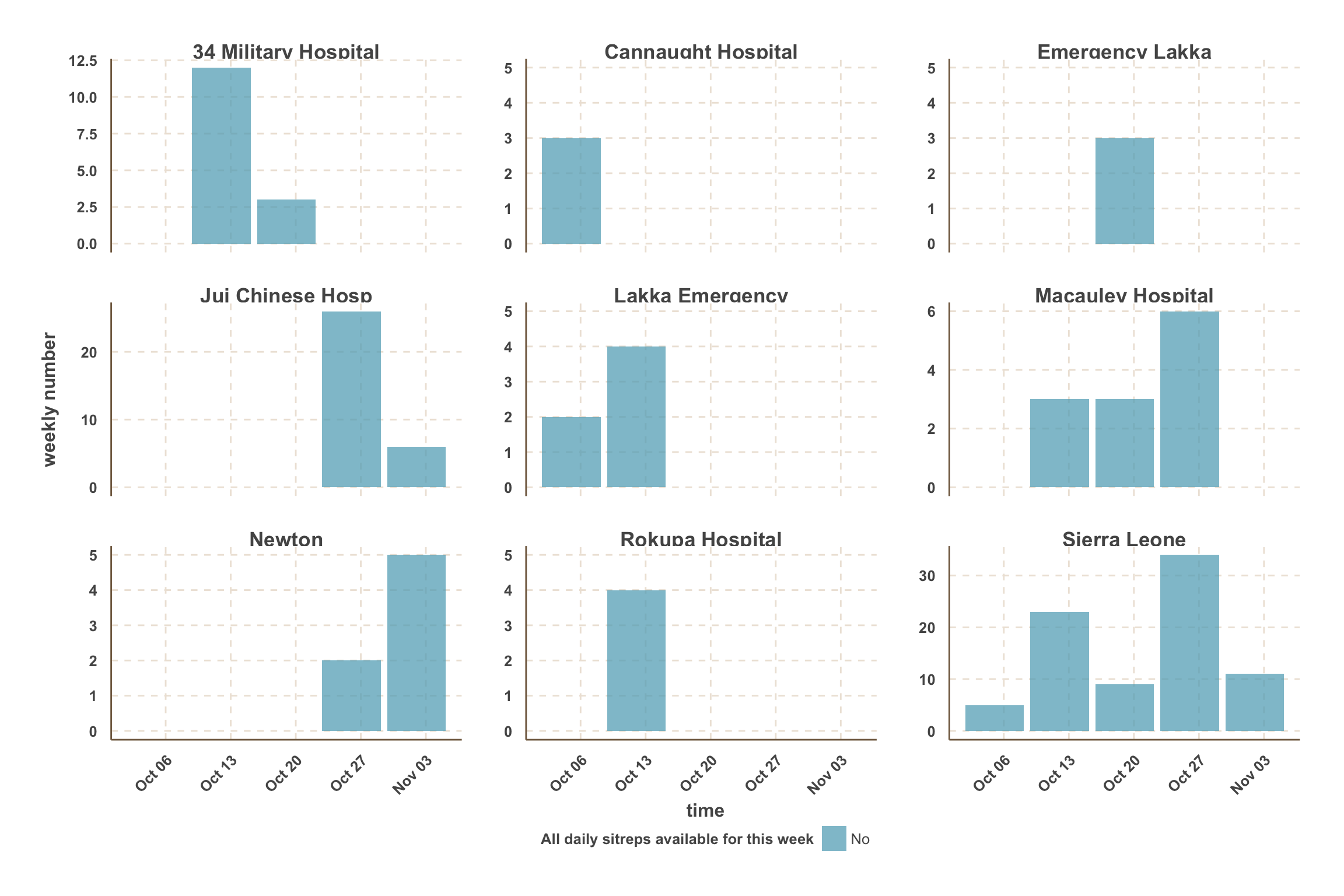
Cumulative admissions
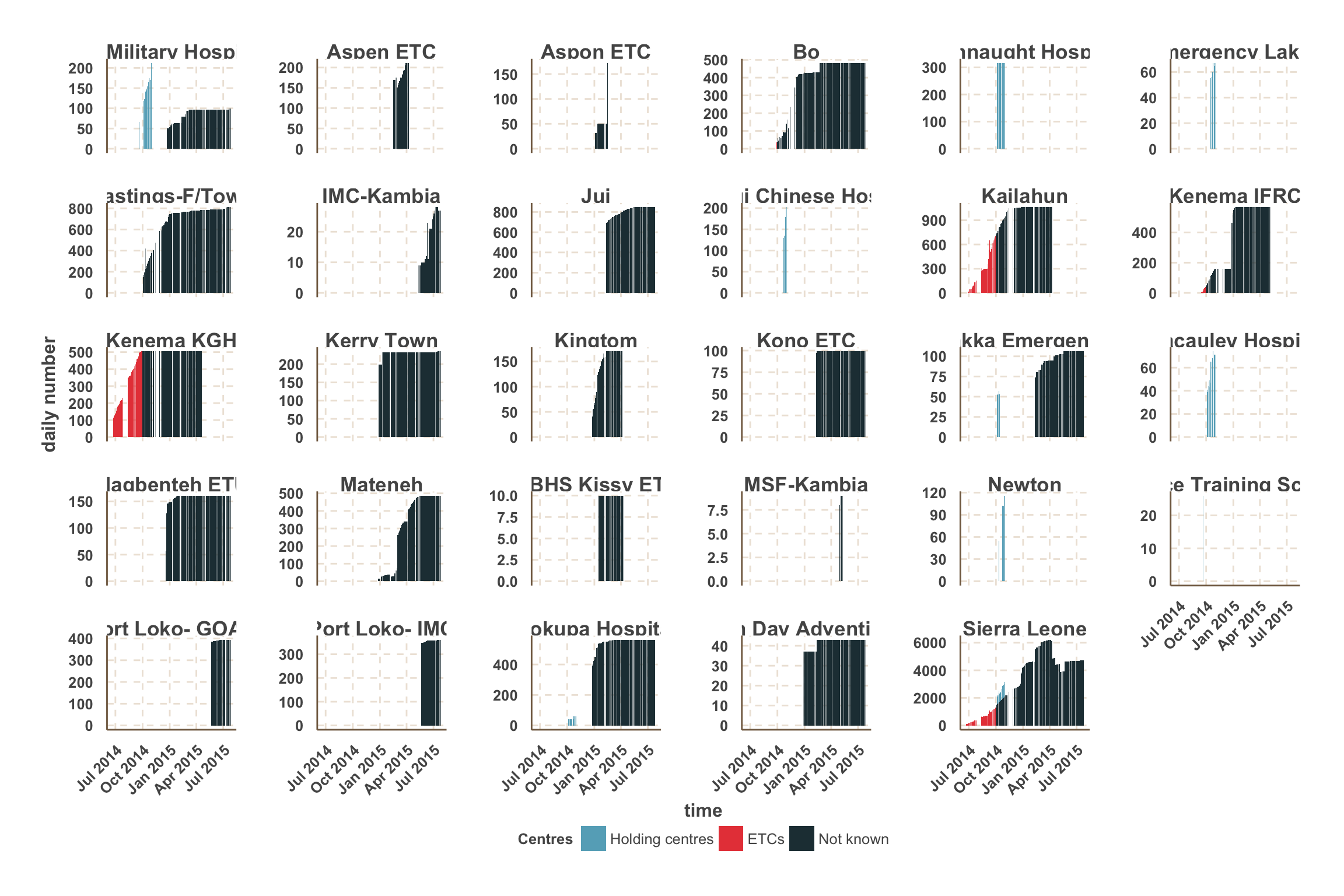
Cumulative deaths in ETCs

Cumulative discharges from ETCs
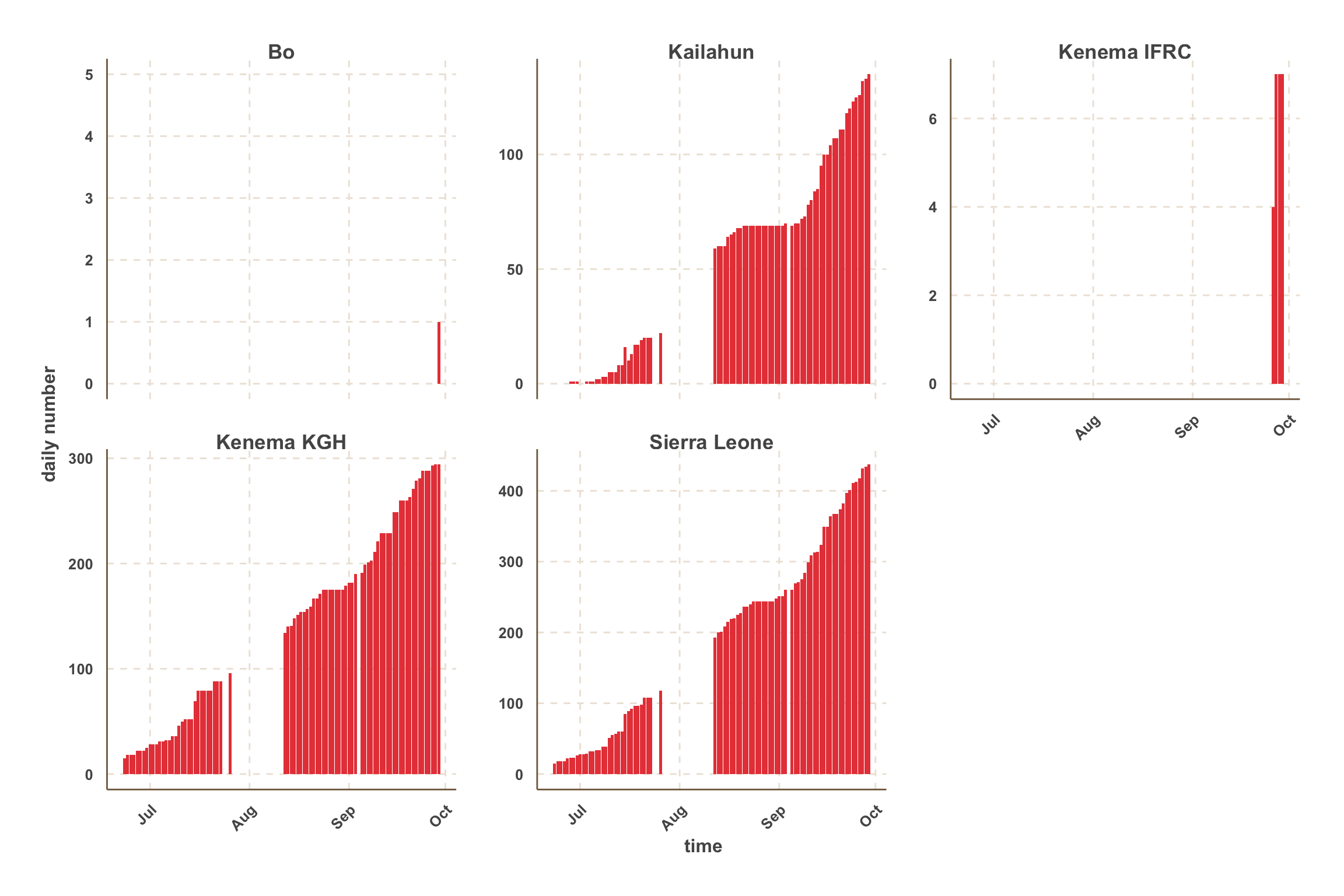
Cumulative referrals to Holding Centres
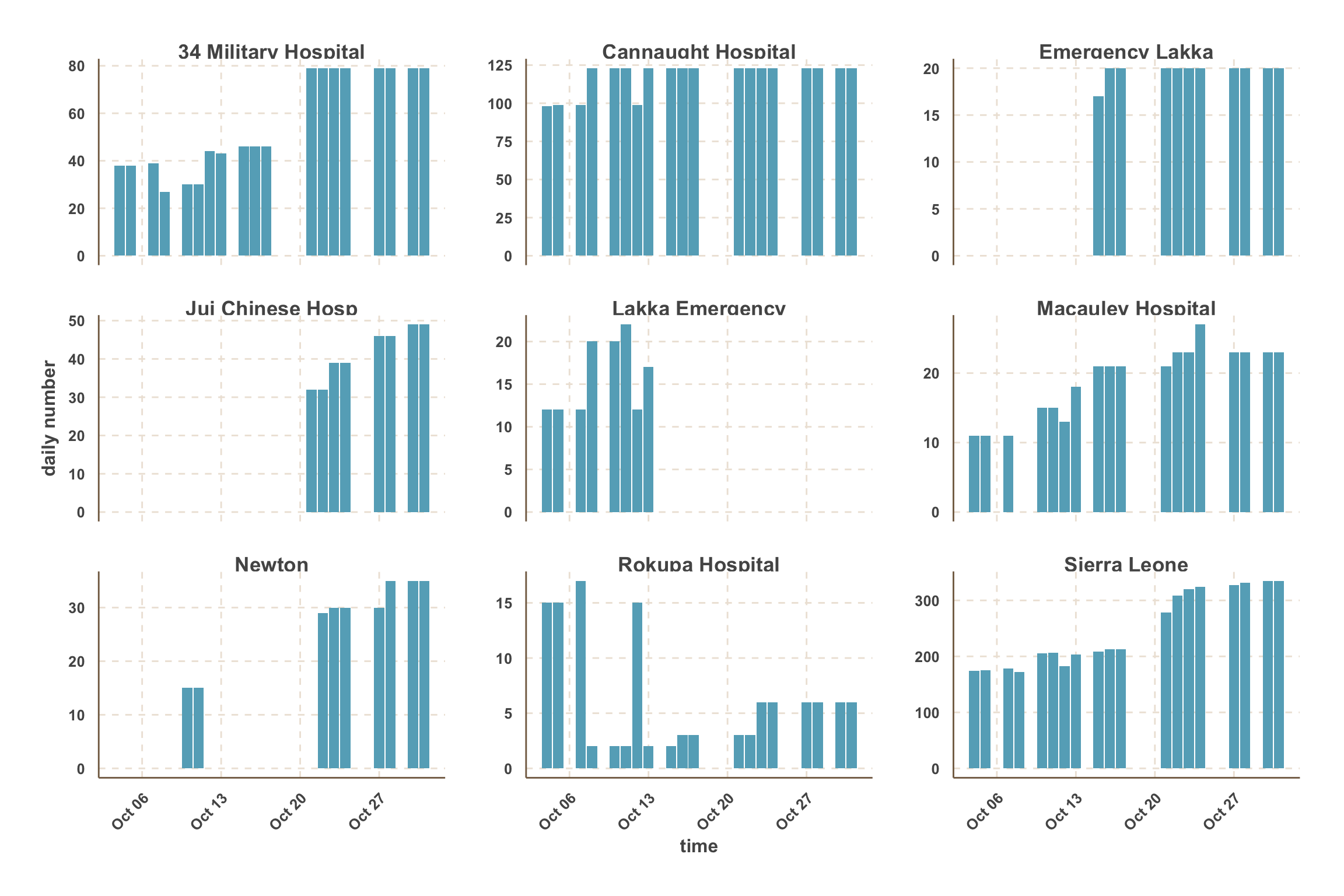
Acknowledgement
Research team
- Anton Camacho (Research Fellow at LSHTM) wrote a script to parse and extract the tables automatically.
- Julia Carney (MSc Student at LSHTM) and Tim Pollington (Research Assistant at LSHTM) entered part of the data manually.
Funding
- This project (#13165) is funded by the Research for Health in Humanitarian Crises (R2HC) Programme, managed by Research for Humanitarian Assistance (ELRHA).
- The R2HC programme aims to improve health outcomes by strengthening the evidence base for public health interventions in humanitarian crises. Visit www.elrha.org/work/r2hc for more information.
- The £8 million R2HC programme is funded equally by the Wellcome Trust and DFID, with Enhancing Learning and ELRHA overseeing the programme’s execution and management.






















